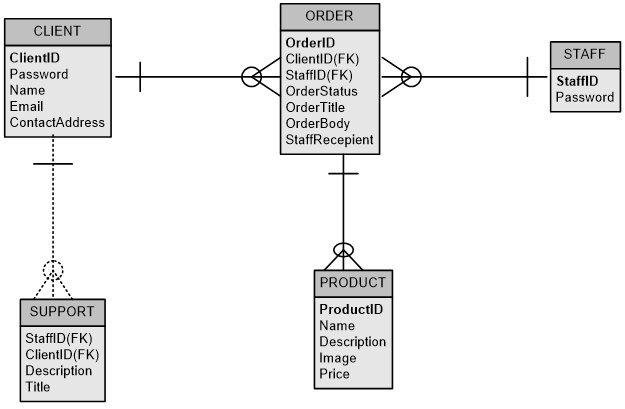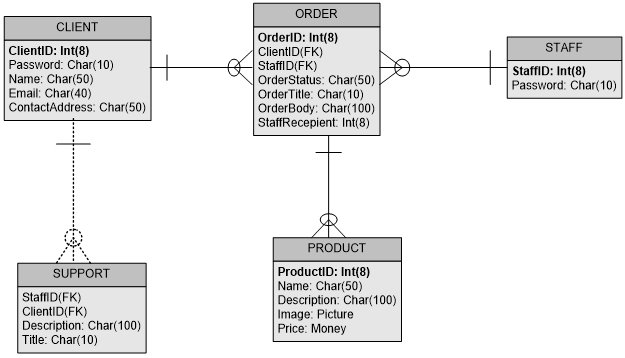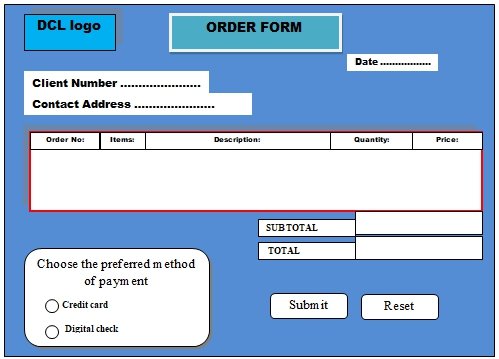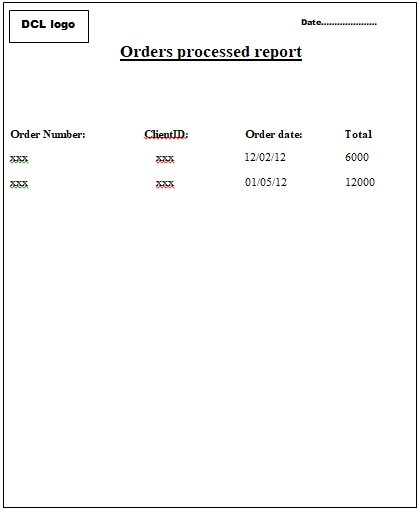Introduction
Decker Computers Limited (DCL) is considered a leader in computer products and service provision across Singapore. The company’s organizational strategy is underpinned on five main points that include a focus on the customer where the company strives to provide value, choice, and service to its customers.
The company also focuses on competitive affiliations across Asia. Decker Computers Limited outlets continue to transform through re-branding thereby offering an expanded choice for the clients. The gains from these transformations will lead to improved customer service, and reduced operational costs for DCL.
Decker Computers Limited knows that within the emergent global economy, e-commerce is increasingly becoming an important part of an organization’s strategy ensuring economic development. Wining on the Internet is prime for DCL strategy, thus information, and communications technology (ICT) in commerce has transformed the way DCL communicates with other businesses.
E-commerce consists of using electronic and communication devices and approaches as well as digital technology for information processing involving business transactions. This is aimed at creating, transforming, and redefinition of links for creating value within organizations, and between organizations, and individuals. Decker Computers Limited implements the business-to-business e-commerce (B2B) defined as e-commerce involving companies.
The building blocks for a web design strategy include requirements, innovation, visibility, and security. Primarily the business objectives, including profit, public service provision and sales growth will be implemented by the website in line with the company’s organizational strategy.
At the base of DCL organizational strategy lies value, choice, and service. These three elements have been defined based on customer insight. In achieving these elements in trade, DCL implements an adequate means of trading. With the customer as the focus, DCL achieves value during trading by among other things offering sales advice, reserve, and collect services, and multi-channel outlets.
Additionally, choice is an important element as considered by DCL. This is achieved by the company in a number of ways that include exclusivity, and a wide range of brands from which the customers can choose.
The third element critical to DCL’s organizational strategy intended to provide an adequate means of trading includes delivery, installation, and help support, and repair, and protection.
Summarily DCL website will be implemented according to the corporate strategy possessing tenets that can relate clearly to the provision of an adequate means of trading for the company.
Decker Computers Limited website will be an e-merchant platform offering public service from various brands and affiliates to clients. The computer products to be marketed through the website are unique to the Asian market and are sold at very competitive prices with unmatched after sales support.
Additionally, the website is expected to achieve communication as a marketing tool where products and services will be related to the information posted. This has focused on the customer giving them service, and choice as part of the organization’s strategy. Secured electronic transfer services for clients who make online orders is in line with the company’s compliance policy.
As following through to accomplish an online order activity at the DCL website will proceed in four steps and consistently gives the visitor a sense of secured transaction. The transactions will be implemented using the secure socket layer protocol. This will be determined by the uniform resource locator address prefix change from ‘http’ to ‘https’. This alludes to DCL’s need to provide a secure transaction environment, especially for e-commerce applications.
Further still the company has an elaborate privacy policy as required by the government. The policy ensures and covers the various principles inherent in data protection act. Generally the website will use the different web design architectural elements in an attempt to conform to the W3C web design standards.
A simplified client registration process at the DCL website will be implemented prior to the completion of any order process. The website will use effectively the client server platform during this account creation and eventual secure electronic transfer (SET). This e-commerce application requires effective and reliable server interactions. For this the client needs to run a browser on the client computer to access the DCL’s website and enable information exchange with designated servers.
This project aims to design and implement an e-commerce website application for DCL as a company located in Singapore. The proposed application will allow the company to provide online sales and technical support to its customers. Currently the company is providing sales and support over the phone and by onsite pick up and drop in. It is envisaged that the website will provide numerous benefits to both the company and its customers.
A feasibility study was carried out to determine the benefits of the proposed solution.
From interviews conducted with the senior staff at the company the following findings were gathered.
Currently:
- Only sales and support is provided through phone, and the service hours for this support medium are restricted to office hours on site and thus the customer cannot access support outside normal office hours.
- Sales and support cannot easily be addressed over the phone as it does not allow files and other support tools to be adequately managed over the phone requiring costly physical visits for the company and customer.
- The process is slow and not satisfactorily approved by the customers seeking alternative outlets and hence the company is loosing to competitors.
Primarily the following benefits will be expected on implementing the proposed system
- The system is dependent on the Internet available 24/7 to access online information
- Flexible hours of operation enabled by access to online support documentation
- Reduce infrastructure costs and enable quicker response times
- Allow the company to receive customer feedback
- An integrated forum will allow customers to share knowledge on PC-based issues and they can share experiences on best practice on solutions to issues.
- The website will allow support to be potentially provided via video tutorials.
- Increased customer and business satisfaction from faster response times and solutions
- Reduce costs associated with paper based records.
Importance of the design phase
This report highlights the design phase for the proposed system indicative of the documentation of the proposed system requirements, including database and process specification requirements. The design phase commences after a successful analysis phase in which the current system is evaluated to determine its shortcomings and propositions are made toward improving the processes within the current system. These propositions are modeled within the design phase.
System specification
On completion of the analysis, an e-commerce website application fully functional was considered as the best business option to address the current system shortcomings. Flexibility, efficiency, and cost reduction were seen as the main reasons for the management’s choice of an e-commerce website application.
Ultimately customer satisfaction would be achieved from a well implemented e-commerce website for the company. Therefore, a system specification was written highlighting the requirements in terms of resources (hardware, software, and people) for the proposed e-commerce website application.
Database model
Because the e-commerce website application will be online it is likely that the company’s client base will expand enormously requiring a well designed database to store securely information and data related to the clients’ transactions.
Additionally, the database will contain the details and images of all the computer products sold by the company, including the respective prices to enable a potential client to view and purchase any of the products online. Generally the application will be linked to e-merchant platforms that will facilitate secure electronic funds transfer using credit card or digital checks, depending on the customer preference.
The database will be implemented as a relational database management system (RDMS) that includes the table structures and all associated design and implementation as well as management procedures. The typical construction blocks for any RDMS are the table. The table is representative of the entity identified within a system. An entity here represents anything about which data can be kept. Typically, a client, and staff are typical examples in this case. Others include product, and order.
The following is a summary of the entity description in the proposed system
Client:
This is the company customer who logs onto the system to evaluate and maybe pick a suitable product to purchase. Prior to accessing these products and their details the system capture the client’s basic details through an automated registration process that enables the client to set up an account within the company’s database. These registration details will be used for eventual order processing and billing.
Product:
This is what the company deals in specifically computer products. The model, types, and true colour images of the product is stored in the database. Other relevant specifications related to the product are also included together with the price and terms of purchase.
Staff:
This represents the employee of the company who may process the orders placed online by a client and respond to client inquiries.
Order:
This represents a singular transaction by the client and highlights the product ordered, date of order, quantity ordered, and amount due.
These entities can be illustrated using a simplified entity relationship diagram (ERD) as shown below.
Logical database

Physical database

A general entity relationship diagram (ERD) representing the e-commerce website application.
Table mapping and normalization
To maintain a stable database with minimal data redundancy normalization can be applied to the identified tables to ensure that they are in the normalized form. The table below summarizes the normalization process carried out on the tables of the proposed system. Most of the tables are in the most stable form on second normalization. Therefore, the 2NF tables are the likely one present within the proposed system.
Website plan
This website application will be designed and implemented is known as a dynamic web site application or server side application. In a dynamic web application a request is made from the client side and executed by a web server that invokes the request with a database, where data is stored, and retrieved in response to a user request.
Examples of dynamic web-based applications include web-based email clients and applications, such as Facebook and eBay as they require data to be communicated between the client side (i.e. web browser) and the web server and database. There are many web technologies and programming languages used to implement dynamic web-based applications that include PHP, ASP, (which is a Microsoft technology), and JSP (Java Server Pages).
User interface description
Several renowned specialists in interface design have offered broad-based principles on designing an effective user interface. For the design of the web application interface the adopted principles offered are offered by renowned HCI practitioner Jakob Nielsen from his book on Usability Engineering. Nielsen highlights the use of the following principles:
Visibility of system status
The system should provide feedback to the user to lets him or her to know what is going in when they have performed a task/user input selection.
Matching the system to the real-world
The system must use terms that are easy to understand.
User control and freedom
There should be clearly marked exit buttons for easy reversal of actions/selections.
Consistency and standards
The same words and labels should be used throughout the system to ensure consistency and so the user becomes familiar with the system as quick as possible.
Error prevention
The potential for errors should be minimized with confirmation boxes before an action is performed.
Visual and simple design
Dialogues must not contain extra information and only information that is relevant and necessary should be used.
Helping users to identify, assess, and recover from errors
Error messages must be indicated in a non-technical way, without any programming, or scripts. A quick solution should be presented to the user.
Help and documentation
Where necessary, documentation should be provided on how to use the system, although the use of the system should be self-explanatory.
The graphic below shows the structure of the website with parent, and child pages.
The shapes titled ‘product support 1, 2, 3, and 4’ represent the pages as categorized by sales and support areas. The real names for these sales categories and support will finally be added at the implementation stage.

Form layout (Order form)

Report layout ( Orders processed)

System security design
It is imperative that the website application to be adopted by this business model is secure. It should be free from viruses and hacking; where hacking involves an individual accessing computer system without authorization. The website should assure both the server and user that it is secure and confidential.
The user expects that the company described in the website has met all the legal requirements. This is because of the fear of engaging in business with a company that is not even registered and in case of any breach of contract the user cannot sue that particular company. The server also expects that the website will protect its rights by ensuring that the user is not in a position to break and compromise the data and information on the server.
The website to be adopted by this business model should ensure that it gives confidentiality feature between the user and the server. One security measure in websites involves the use of passwords. Business models that have employed web security design have implications that accrue to them.
The positive implications are that they become competitive advantaged, they achieve their goals and objectives, and stick to their mission and vision. The negative implication includes the high cost incurred in the process of web security design and development.
Considering that the intended website is an e-merchant platform able to support e-commerce transactions, security is considered paramount for successful transacting, especially when the risk toward such applications is high. The company must ascribe to standards like the electronic industry citizenship coalition (EICC) code of conduct to govern their business ethics.
The code compels all stakeholders, including suppliers, and customers to comply with certain regulations governing business on the proposed website. This is in line with one of the nine principles in the organization for economic cooperation and development (OECD) guidelines. A security awareness program must be implemented and serve as reference among the company’s partners.
The company will work with communication service provider to ensure the program is well implemented. This can be managed by a team led by the company’s Internet administrators and the business standards department. Therefore, maintaining security at the company requires concerted effort involving various stakeholders.
Generally, policies, and standards are already available to ensure that security is well addressed on the company’s website. The company also has an internal code of conduct to govern business transactions within the company to ensure that there is no threat that can be initiated internally.
Employees at the company must read and adhere to the code of conduct that addresses security, especially for the information that the company handles. Additionally, the company will have a team that continuously monitors transactions to ensure that these comply with the business rules. All suspect transactions can be identified and isolated to be further evaluated to ascertain their validity.
Recommendation for the next phase
The successful conclusion of the design phase highlighted within this report will be followed by the development process in which the proposed system specification is translated into the actual database and procedure specifications or application using suitable programming language. Once the design specification has been approved by the intended user, the development phase will commence.
The table here below summarizes the development plan that will follow the design phase